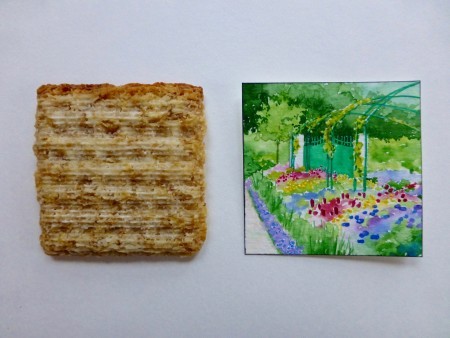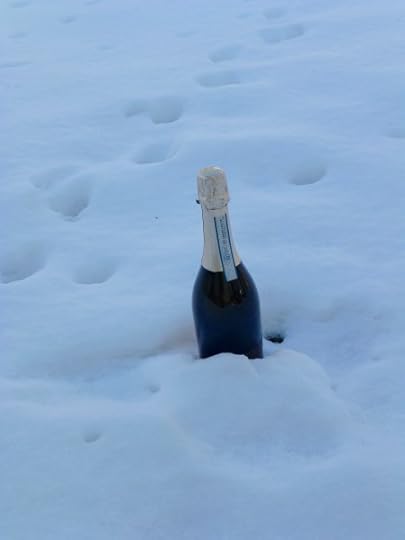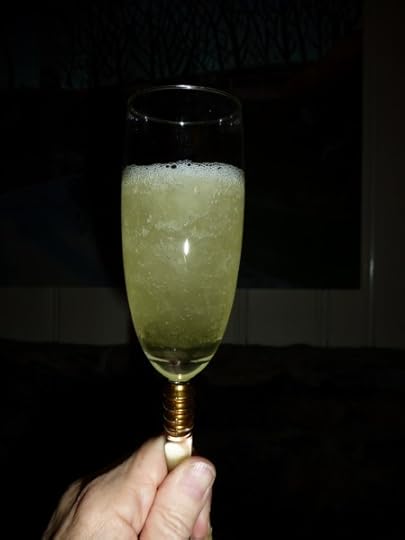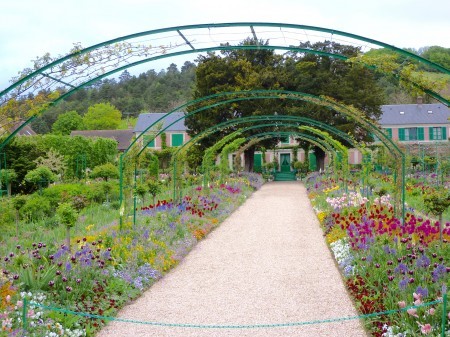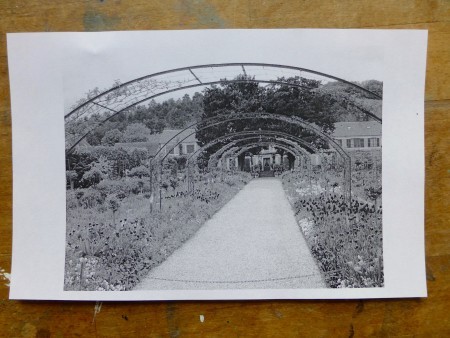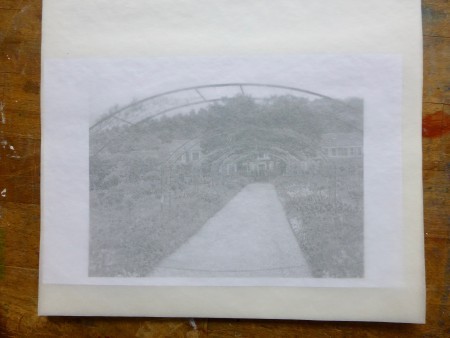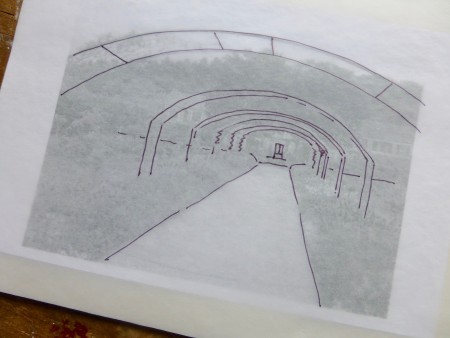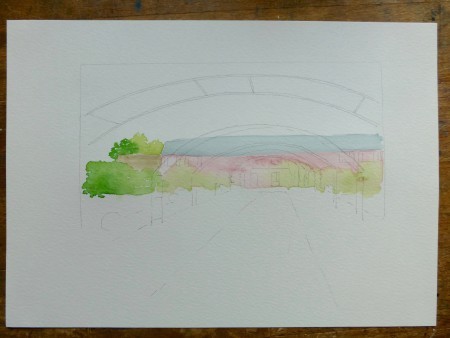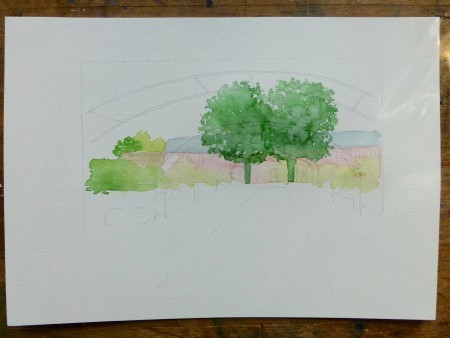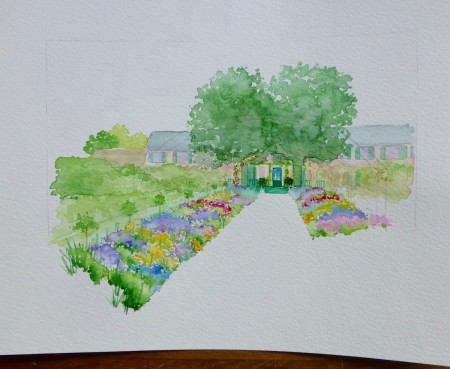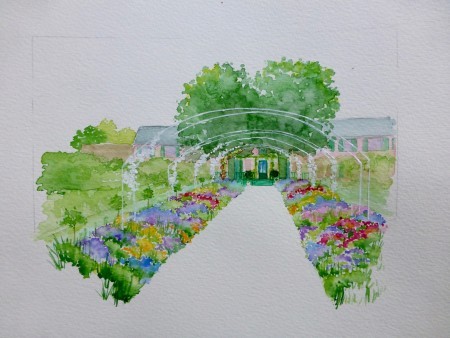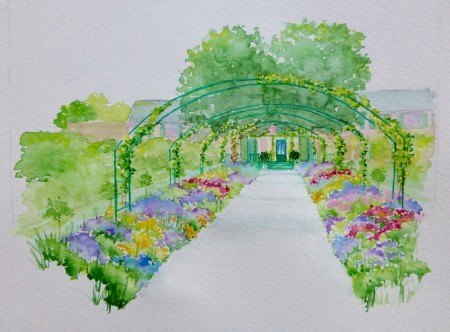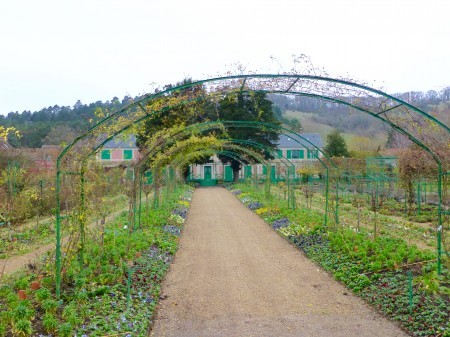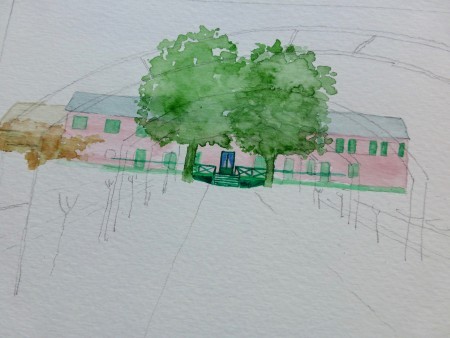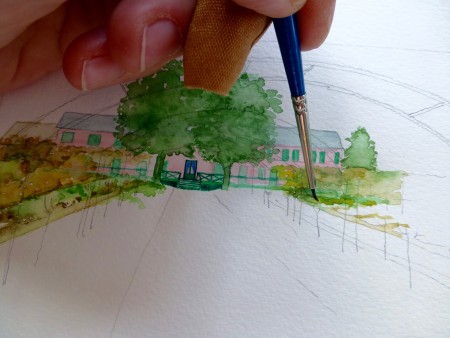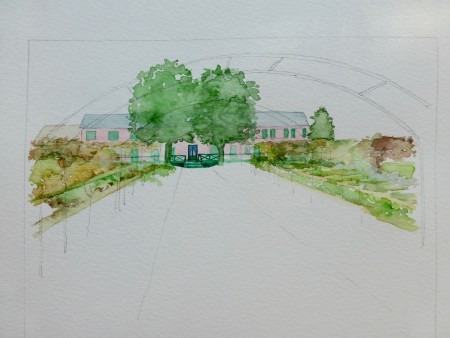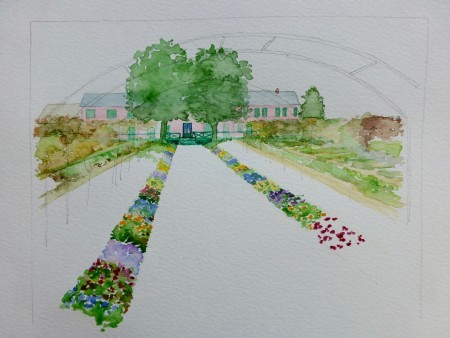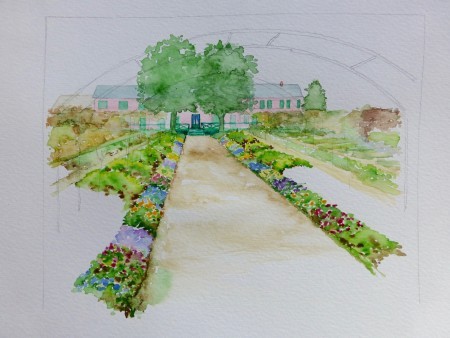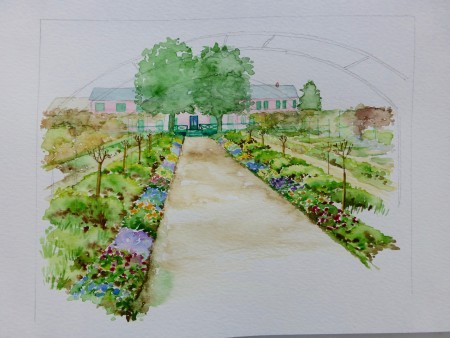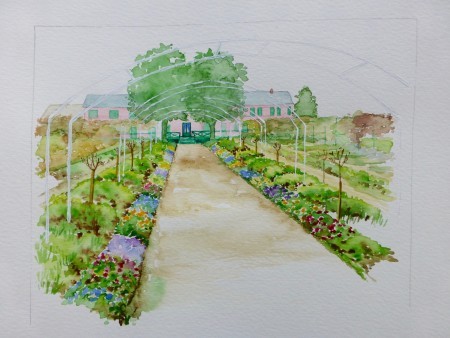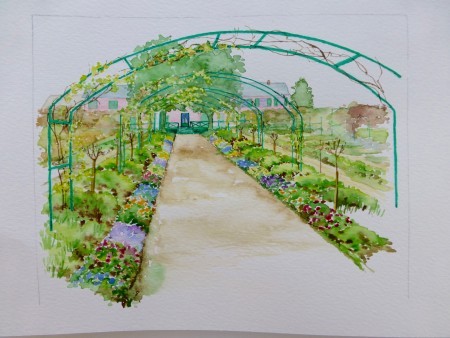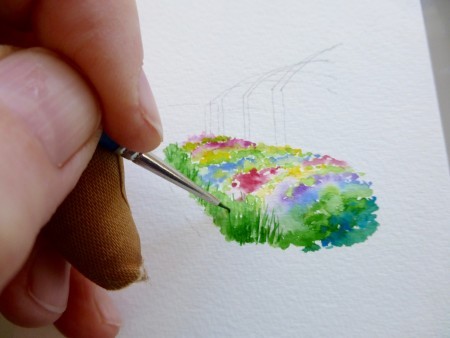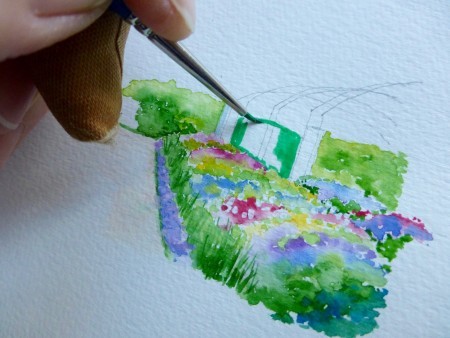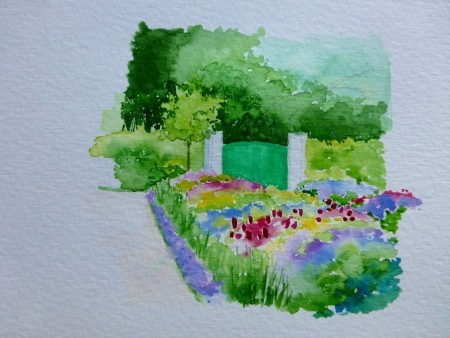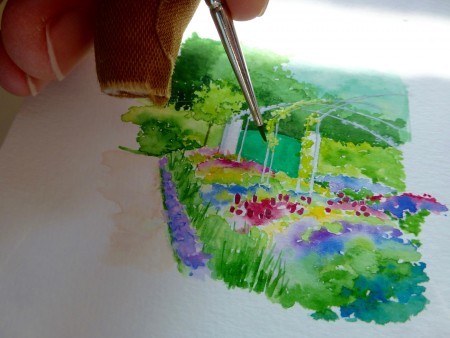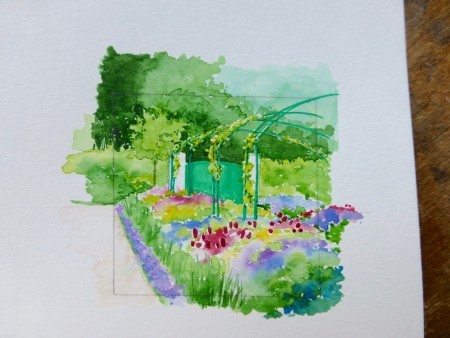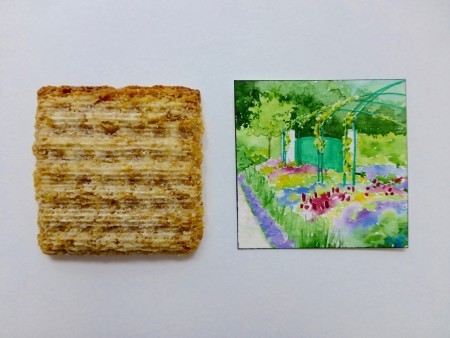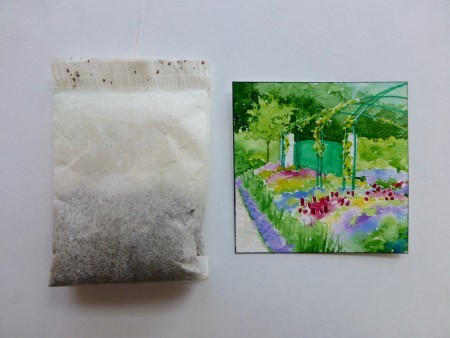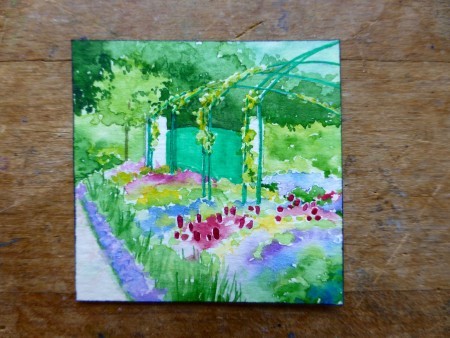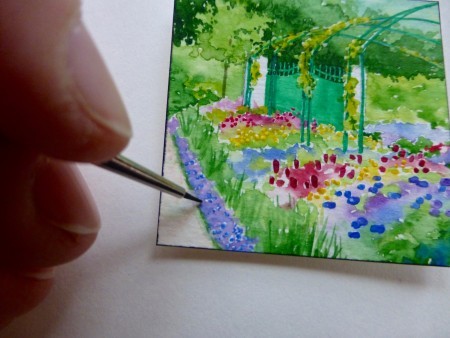Triscuits and Cheating.
On the left (below) is the delicious cracker made by Nabisco*, a salty whole grain hors d’ouvre-holder and snack food beloved by Americans. On the right is a Triscuit made by me, an author-illustrator beloved by 6 out of 7 of my cats*.
*Nabisco/Mondelez (pronounced mon-dell-eeeze) has given me permission to use their trademark Triscuit to describe my teeny-tiny paintings up until the time they send me a cease and desist letter. Thank you, Product Manager at Mondelez Global LLC in East Hanover, New Jersey.
*Steve is the new cat #7, a feral tuxedo Manx that I’ve been feeding for five months but haven’t been able to trap yet because he still doesn’t understand that he belongs to me, dammit.
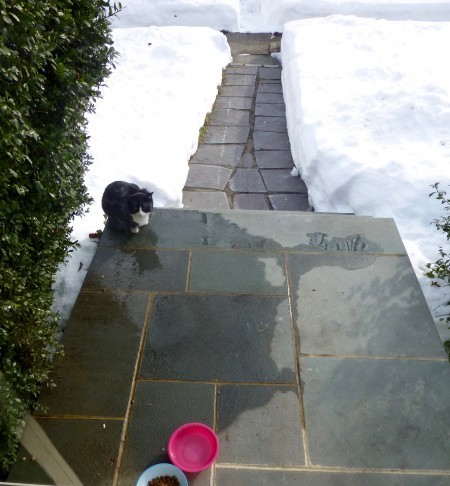
Kirra, this snow is for YOU.
Last weekend it got so cold here on the north shore of Long Island that I had to rescue my Champagne-O-Meter from the backyard (I wish I could put a photo in parenthesis):
For 2 days the temperatures hovered around Zero degrees ( 0 F, -18 C) and I did not want my champagne to totally freeze. So on Sunday morning I put the bottle back out on the patio and left it there for 7 hours (I wonder if inanimate objects are subject to “wind chill”?). And then it was – finally — 5 o’clock and I brought that baby inside and popped the cork and voila! I got a Champagne Slushie!!
Dear Readers, your eyes do not deceive you. This is what deep-frozen champagne looks like, a glass full of icy bubbles! It was fabulous.
Note: A bottle of champagne left out in sub-zero temperatures for 7 hours will freeze from the bottom up. The first glass you pour looks a lot like regular champagne, except for being much colder, but when you set the bottle down after your first pour something happens strange happens and the normal laws of champagne physics break down. The champagne begins to flow upwards out of the bottle, against gravity, in a continuous froth of bubbly foam until you quickly pour a second glass, at which time balance is restored to the Champer-Verse and the stuff behaves normally, except for its being mostly icy slush. At which time you give Thanks that you have a wonderful reason to not totally hate Winter.
Getting back to the Triscuit thing, to long time Dear Readers of this blog that means one thing: Time for a Triscuit Give Away! For new Dear Readers of this blog, please let me announce that it’s Triscuit Give Away Time!! Which we will get to at the end of this post (feel free to skip ahead to the end if you are like my husband and think blog posts should not go on and on, like mine tend to) because for now, I want to discuss How I Cheat When It Comes To Drawing Really Hard Things in Perspective.
Consider, for example, a view such as this:
This is the allee of Monet’s garden in Giverny, the main feature of his sumptuous flower garden (which is way better than his more famous water garden, by the way). I took this photo in May 2013 at about 7 o’clock at night, long after the garden had closed for the day. You can read how I was able to sneak this photo, and a lot of others, when the garden was officially closed,which I consider a red hot travel tip, by clicking here. We’ll wait while you read up on this.
Hey! You’re back! So let’s get to it: Drawing all those arched arbors down this rather long garden path/allee is way, way above my pay grade as a draftsperson. I could never do it without cheating. So what I do is, I cheat. First, I have print out a black and white copy of this photo (from my computer, on plain white paper — no fancy photo-quality sheets necessary):
The black and white picture make it easy for me to see the contrast I need in order to trace those arbors onto tracing paper:
I could never see those trellis lines if this photo was still in color. So, in black felt tip pen I trace over the arbors and the horizon, because a horizon is a useful thing to know in any picture, as it keeps the painter from painting things that look like they are floating in the air:
The next step is to trace those guide lines onto watercolor paper (use either a light box or tape the sheets onto a window, if it’s a sunny day):
I slather in the background, using very broad strokes and watery paint. I will try to keep these features very faint in this picture in order to emphasize the foreground — the lovely floral allee:
I have to get those two huge yew trees at the top of the all just right — they are the key to the scale and truthfulness of everything else I will paint:
So I finish these yew trees and then I take a good look at the picture and I see right away that the top trellis/arbor that I drew would not work in this picture. So I erased them and, as the pencil lines were so faint, they are hardly noticeable under the paint of the yew trees (paint tends to “fix” graphite, BTW). And then I was all set to get to the good stuff: the flowers! I LOVE painting these flowers!! And sorry, I got so engrossed painting these wonderful fleurs that I forgot to take pictures of the progress, so here’s a pic of the piece when it’s about 80% done:
I use white acrylic paint to paint over the arbors because I need them to POP, and putting down a base of white acrylic paint before I paint them green will do that:
See? (See: Below)
You might notice that in the end I futzed the horizon line on the left side of this picture. I did that because I thought it was too strong a horizontal and I thought it was distracting. For the record, that (left) part of Monet’s garden is very complicated — lots of topiary and trained shrubs and big brambly stuff that I don’t want to get into — but I hope I’ve indicated enough of a there there…but I might look at this picture next month and decide it needs more definition. However, for now, it’s done.
Monet panted in series: haystacks, poplar trees, Rouen Cathedral…you know what I mean. Good lord, he painted his water lilies 270 times. So just because this is the second picture I’ve painted of his allee (counting last week’s picture) does not mean that I am done with this view, no siree. I went to Giverny last December specifically to get a sneak peek at Monet’s garden in Winter, which is how I got this photo:
I love gardens in Winter. Love love love love them. I love them so much that I put a Winter Garden in my garden book (in the Edinburgh chapter). I also adore decrepitude — that’s why I had to write about a decrepit garden in London for Gardens of Awe and Folly. To me, a flower garden in December (in the northern hemisphere) is all about decrepitude, and all about Winter. So poetic! So truthful! So soulful! So to me, this view of Monet’s garden is deliciousness times two. I could not wait to paint it! So, without further ado, let me trace those arbors and get down to painting!!!!
P.S. above: Last week I mentioned that I photoshop my fingers for these action pix…this week I just left the band aids on. My hands get very dry in the Winter but that’s OK: I can paint wounded. I’m so very, very brave that way.
And done:
You can see that in this picture I left the foreground arbor/trellis intact (the same trellis that I eliminated from the Spring version). It works here, I think. (Fun fact: in total, the allee has only 6 trellises. Trellises? Is that a word?)
I can not tell you how satisfying this was to paint! It was heaven. That’s why, like stout Cortez at that place where he wept because there were no more worlds to conquer…wait. I think that was Alexander the Great, who wanted to keep going; Cortes was the chap full of wild surmise. I could go either way with this literary reference because any hoo, I was not ready to quit this wonderful allee, and as I was sober (it was at least an hour away from Sunday Cocktail Time), I decided to paint a Triscuit as a token of my appreciation for all my Dear Readers:
Voila, the Giverny Triscuit:
Now, I know that some of my Dear Readers do not come from Nabisco countries so they might not know about Triscuits, so maybe this will help set the scale (because I assume that everyone knows about tea bags):
The Triscuit is 4.5 centimeters square, about the size of a Gum Nut Baby. It’s really small, but you know that small is my “thing”.
This is a view of Monet’s allee facing away from the house, towards the big garden gate at the bottom of his flower garden. That’s the gate the the master himself used when he strolled from his studio to his water garden (on the other side of the wall there). It’s a historic gate. And now that I look at it…the gate is wrong. Back to the painting. . .
OK, now it’s DONE.
To win this Giverny Triscuit, all you have to do is leave a Comment in the Coments at the end of this post, and guess a number between 1 and 50. When the Comments close after five days — sorry, it’s a spam-avoidance necessity — I will have Top Cat choose a number and announce the Winner in next week’s post!
The fine print: In order to be eligible for this contest you must have left a Comment here in the past two weeks.
So Good Luck, my Dear Readers, and keep Commenting…Pub Date of Gardens of Awe and Folly is March 1 and I might be in the mood to celebrate with another Triscuit Give Away (or another bottle of frozen champagne, depending on the weather).

